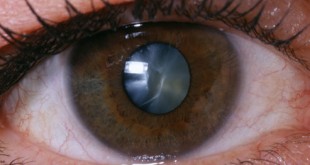Introduction
Lipid profile or lipid panel is a measurement of different types of cholesterol and level of triglyceride in the blood. It is a collective term given to the estimation of total cholesterol, high-density lipoprotein cholesterol (HDL-L), low-density lipoprotein (LDL-L) cholesterol and triglyceride. An extended lipid profile may include very low-density lipoprotein (VLDL-L). HDL-L is considered as good cholesterol while LDL-L and triglyceride are considered as bad cholesterol.
This test is used to identify dyslipidaemia. Dyslipidaemia is defined as abnormal amount of cholesterol (LDL, HDL) and triglyceride level and is a risk-factor for cardiovascular disease (CVD). Pancreatitis (inflammation of the pancreas) is also one of the outcomes of dyslipidaemia.
How to Test For Lipid Profile?
Lipid profile is measured by taking blood sample after an overnight fasting (12 hours fasting) [1]. This is to ensure triglyceride level is accurate. Triglyceride is affected by a meal thus it is recommended to measure in a fasting state.
In diabetes patients, it is recommended to screen for lipid profile annually [2].
Why Test for Lipid Profile?
Lipids are fats that are found in the body and cholesterol is a type of lipid. Cholesterol is produced by our body and also from the food that we eat from animal sources such as meat, egg yolk and dairy products (milk, cheese). Our body needs cholesterol to maintain cell health.
Triglycerides are a type of fat in the blood. The body converts extra calories that we eat into triglycerides, which are stored in fat cells. High triglyceride levels usually mean you regularly eat more calories than you burn. Too much triglycerides will lead to excess production of cholesterol leading to high cholesterol (hypercholesterolaemia).
Too much cholesterol leads to atherosclerosis (hardening and narrowing) of the arteries leading to coronary artery disease. The blood cholesterol level is related to the type of food we eat. It is also determined by genetic condition (familial hypercholesterolaemia).
Relationship between Lipid Profile and Diabetes
Diabetes is a metabolic disorder. Dyslipidaemia is one of the common co-morbid conditions occurring concurrently with hyperglycemia (high blood glucose in the blood).
Hyperglycaemia and dyslipidaemia increase the risk of endothelial dysfunction (abnormal function of the blood vessel wall) and atherosclerosis. This process will cause thickening and narrowing of the blood vessel.
Coronary artery disease is one of the macrovascular complications with high morbidity and mortality among diabetes patients [3, 4].
Levels to aim in diabetes patients [2] :
- Total cholesterol – <2 mmol/l
- Low-density lipoprotein – <6 mmol/l or <1.8 mmol/l in patients with CVD
- High-density lipoprotein – >2 mmol/
- Triglyceride – >7 mmol/l
Complication Arising From Dyslipidaemia
Dyslipidaemia lead to macrovascular complication affecting blood vessels. Affected vessels increase the incidence of coronary artery disease, cerebrovascular disease and peripheral artery disease.
Atherosclerosis is contributed by high levels of LDL and VLDL lipoproteins. Triglycerides also play a role in the development of atherosclerosis.
HDL lipoprotein is ‘good’ cholesterol and is needed to maintain the balance of lipid profile in the blood. It can be enhanced by exercise.
Diabetes patients have two to three fold increased in developing these complications.
Can Dyslipidaemia Be Treated?
Dyslipidaemia can be treated with statin group of drugs. There is strong evidence showing the benefit of treating dyslipidaemia in diabetes patients in preventing Cardiovascular Disease (CVD) complications namely heart attack (myocardial infarction) [5,6]. High triglyceride is commonly treated with a group of drugs called fibrates.
Apart from statin and fibrates therapy, diet and exercise modification augments normalization of lipid profile to target levels.
Risk-Factors for Dyslipidaemia
Risk-factors for dyslipidaemia :
- Overweight and obesity
- Diabetes
- Family history
- Sedentary lifestyle
- High-fat and low-fibre diet
Can Dyslipidaemia Be Prevented?
Dyslipidaemia can be prevented by practicing a healthy lifestyle. Increasing physical activity and eating low-fat and high-fibre diet is recommended.
Conclusion
Lipid profile is a measurement of cholesterol and triglyceride in the blood. Abnormal lipid profile or dyslipidaemia increases the risk of CVD in diabetes patients. Dyslipidaemia can be treated with statins and fibrates.
Lifestyle modification is recommended.
References
- Colhoun HM, Betteridge DJ, Durrington PN, Hitman GA, Neil HA, Livingstone SJ, Thomason MJ, Mackness MI, Charlton-Menys V, Fuller JH: Primary prevention of cardiovascular disease with atorvastatin in type 2 diabetes in the Collaborative Atorvastatin Diabetes Study (CARDS): multicentre randomized placebo-controlled trial. Lancet 2004; 364:685-696.
- Engelgau MM, Geiss LS, Saaddine JB, Boyle JP, Benjamin SM, Gregg EW,Tierney EF, Rios-Burrows N, Mokdad AH, Ford ES, Imperatore G, Narayan, KM: The evolving diabetes burden in the United States. Ann Intern Med 2004; 140:945–950.
- Haffner SM, Lehto S, Ronnemaa T, Pyorala K, Laakso M: Mortality from coronary heart disease in subjects with type 2 diabetes and in non-diabetic subjects with and without prior myocardial infarction. N Engl J Med 1998; 339:229–234.
- Heart Protection Study Collaborative Group: MCR/BHF Heart Protection Study of cholesterol-lowering with simvastatin in 5,963 people with diabetes: a randomized placebo-controlled trial. Lancet 2003; 361: 2005-2016.
- Malaysian Clinical Practice Guideline on Management of Type 2 Diabetes Mellitus 2009.
- http://my.clevelandclinic.org/heart/services/tests/labtests/lipid.aspx – accessed 20th September 2012 .
 PENDIDIKAN PESAKIT Kementerian Kesihatan Malaysia
PENDIDIKAN PESAKIT Kementerian Kesihatan Malaysia



